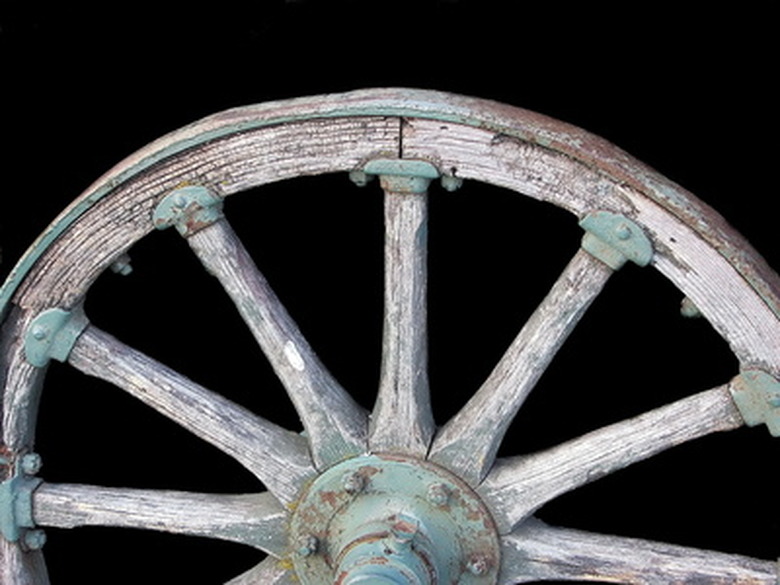Parts Of A Wheel And Axle
Basic science teaches that simple machines have long made work, or the expenditure of energy, easier for humans. A type of lever, the wheel and axle combination rotates around a central point called a fulcrum. This design allows someone to apply force at any point and still produce movement, which greatly increases their usefulness. The invention of the wheel thousands of years ago marked a turning point in early human civilization; the wheel and axle have been vital tools to humankind ever since.
The Wheel
The Wheel
Typically round in shape, the wheel will rotate or spin either when something applies force on it or when something applies force to the axle it's connected to. A wheel reduces friction between the load it carries and the ground, resulting in less energy expended, and thus less work. Some wheels today have teeth, making them gears, while others are connected to drums and become winches or pulleys.
The Axle
The Axle
An axle rests in the center of the wheel. Either the axle will turn a wheel, as in a car, or a wheel will turn an axle, as in a water wheel. Either way, the axle experiences friction as a result, which requires force to overcome. The beauty of the axle is that it requires much less force to create movement than trying to drag something across the ground. Many axles connect to other devices, which turn as a result of the combined movement of the wheel and axle.
How They Work
How They Work
As a lever, a type of simple machine, the wheel and axle together make work easier by requiring less energy input. They greatly reduce friction and allow for the movement of heavier loads. They also provide leverage, meaning they can multiply the force applied to them and give greater output. The larger the wheel, the easier a person can push a cart. This occurs because the larger diameter acts as if it were a larger lever, thus multiplying force at a higher rate.
Modern Applications
Modern Applications
A person can find wheels and axles almost everywhere as they are vital parts to many complex machines. Motor vehicles rest on wheels and axles and even use wheels for steering. Wheels with teeth, called gears, comprise many parts of car engines and other types of machinery. Turbines, water wheels, windmills could not exist without wheels and axles. Even the creation of clay pottery relies on the wheel and axle for spinning. Pulley systems utilize several wheels and axles in conjunction with one another.
Cite This Article
MLA
Holden, Amanda. "Parts Of A Wheel And Axle" sciencing.com, https://www.sciencing.com/parts-wheel-axle-7176385/. 24 April 2017.
APA
Holden, Amanda. (2017, April 24). Parts Of A Wheel And Axle. sciencing.com. Retrieved from https://www.sciencing.com/parts-wheel-axle-7176385/
Chicago
Holden, Amanda. Parts Of A Wheel And Axle last modified March 24, 2022. https://www.sciencing.com/parts-wheel-axle-7176385/
